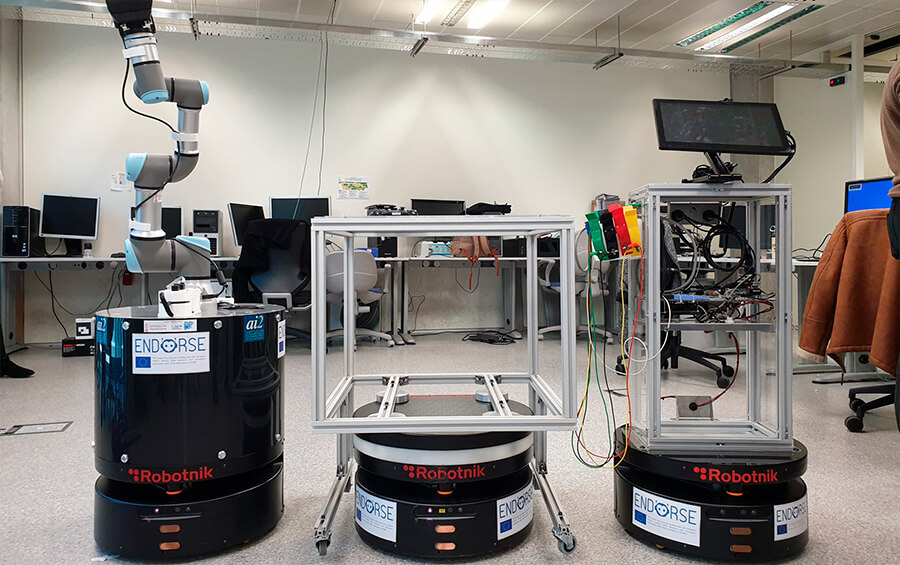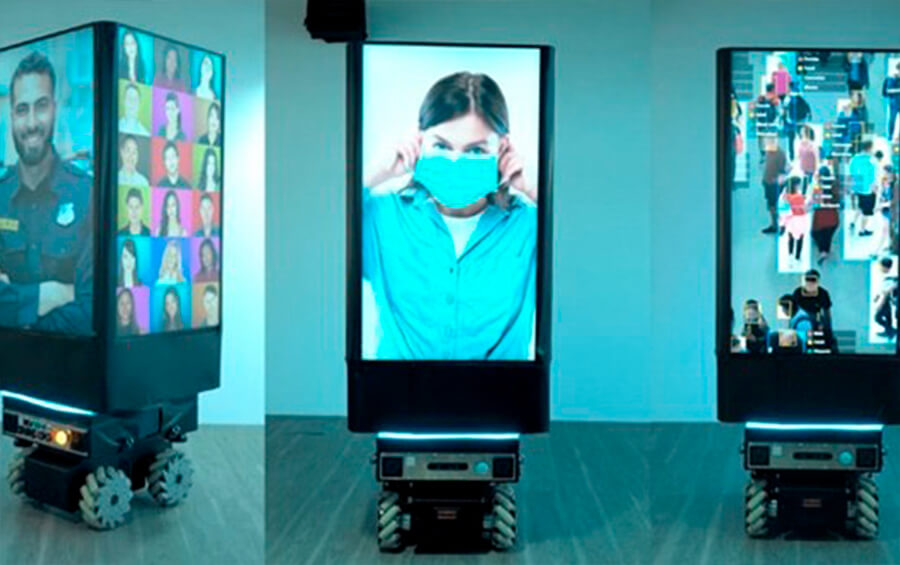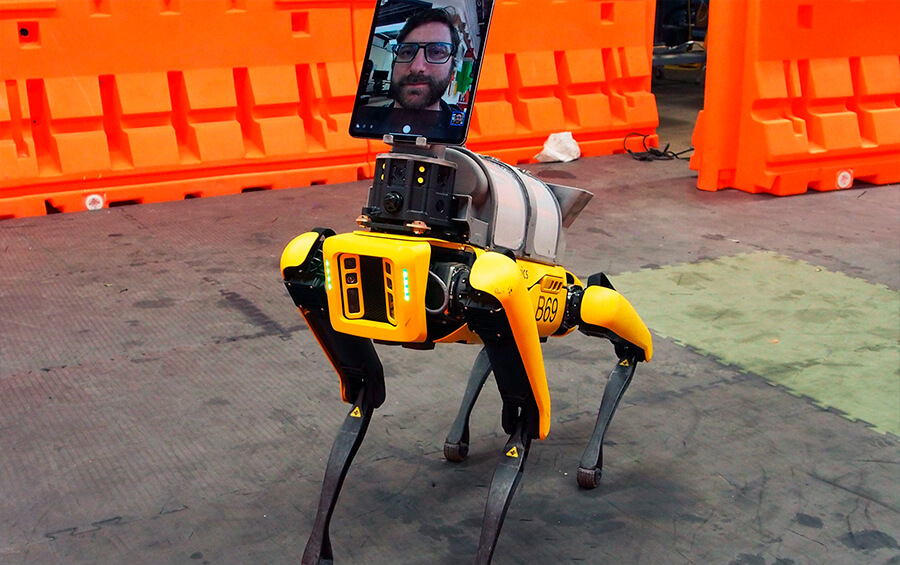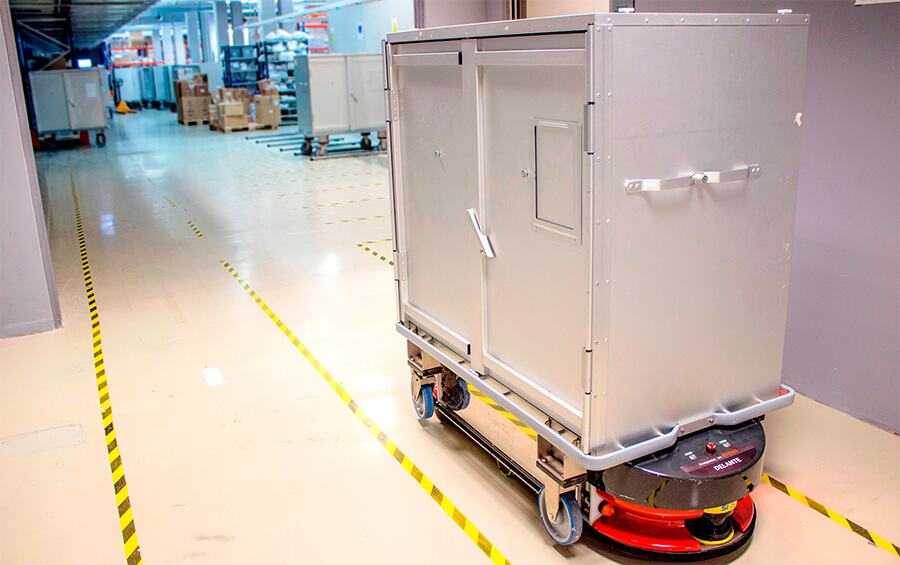Robotics has emerged as one of the technologies that is most contributing to the fight against COVID-19, providing numerous solutions to the needs that the pandemic has raised. In this way, also, it has contributed to revitalizing the economy, which has been severely reduced by the health situation we are experiencing worldwide. In fact, it has brought to light the importance of robotics and the prominent role they play at the moment, as it is already happening in the current industry 4.0 and other technologies such as Artificial Intelligence, blockchain or cybersecurity, among others. There are numerous applications in which collaborative robotics is already present, something that had to be reflected in these times of crisis.
Why is robotics key right now?
In the fight against the virus, one of the measures that has been shown to work to prevent contagion is to maintain a safe distance between people. And here collaborative robotics has a lot to say.
Specifically, mobile robots working in hospital can perform autonomous tasks such as:
- Transportation of food.
- Transportation of medicine
- Transportation of laundry supplies.
- Disinfection tasks.
- Telemedicine.
In this way, the physical relationship between health personnel as well as patients and staff in general who transit through the hospital is avoided. All these tasks are the usual ones when we talk about collaborative mobile robotics (this last concept, collaborative means that robots, thanks to the integrated sensorization, can work safely in environments with humans).
Already in 2008, Robotnik noticed the importance of robotics and launched its AGVS robots in several hospitals, which were used precisely to autonomously transport different goods through the hospital. This made it possible to automate a repetitive and tedious activity while preventing it from being carried out by a person, who could dedicate his time to carrying out tasks of greater added value.
Current projects from Robotnik
The same idea of maintaining the safety distance between people is at the base of the RADERPAC project (Rapid Deployment Robot for Pandemic Crises) that Robotnik is currently developing and is funded by the Generalitat Valenciana (Spain). In consists of the development of a modular robot designed to work in hospitals allowing the assembly of a module for disinfection and fumigation (something fundamental in the fight against COVID-19). This same mobile robot will serve as the basis for other health purposes such as telemedicine, telepresence or the transport of loads previously mentioned.
Robotnik has extensive experience in the development and supply of this type of robot, the use of which goes beyond the healthcare environment, also being used in areas of nuclear, radiological, chemical, and biological contamination. This technology can be applied almost immediately for many applications, using robots as the first separation barrier against the virus and thus helping to protect the workforce and the patients themselves, which showcases the importance of robotics in this sector.
Other projects Robotnik is currently working on is ENDORSE, which is part of the H2020 program of the European Union. This R&D project is based on developing logistics and diagnosis applications for hospitals. In it, different developments will be carried out in order to automate various tasks within a hospital, from the distribution of medicines and materials to the monitoring of the health status of patients. All of them aimed at reducing contact between people.

- Collaborative robotic arms (cobots) as a working tool for physical therapists. These would serve to interact with the patient without having to physically touch him.
- Robots for the automatic performance of COVID-19 tests.
- Robots for processing these tests quickly and efficiently. Something that, for example, the Flemish Institute of Biotechnology (Vrije Universiteit Brussel) is working on.
- Robots to manufacture masks. In Spain, thanks to the help from some large companies, it has been possible to increase the number of masks that healthcare personnel especially needed.
- Telepresence robots. Based on our Summit-XL Steel, we found a robot that uses the latest advances in artificial intelligence, digital signage, and video analysis and that performs tasks such as analysing the number of visitors, age, and gender of them.


The pandemic that we are currently experiencing and that affects everyone, has forced to redouble efforts in all areas. Robotics could not be left out of it. On May 4, the European Commission launched the Coronavirus Global Response initiative and mobilized a total of € 1.4 billion to fight the virus. On May 20, it mobilized another 122 million euros to support a series of R&D actions to combat COVID-19. This framework of actions highlights the importance of robotics, which will continue in force once we move forward and place ourselves in the future that COVID-19 leaves us.
If you are interested in collaborative mobile robotics, don’t forget to subscribe to our blog!


